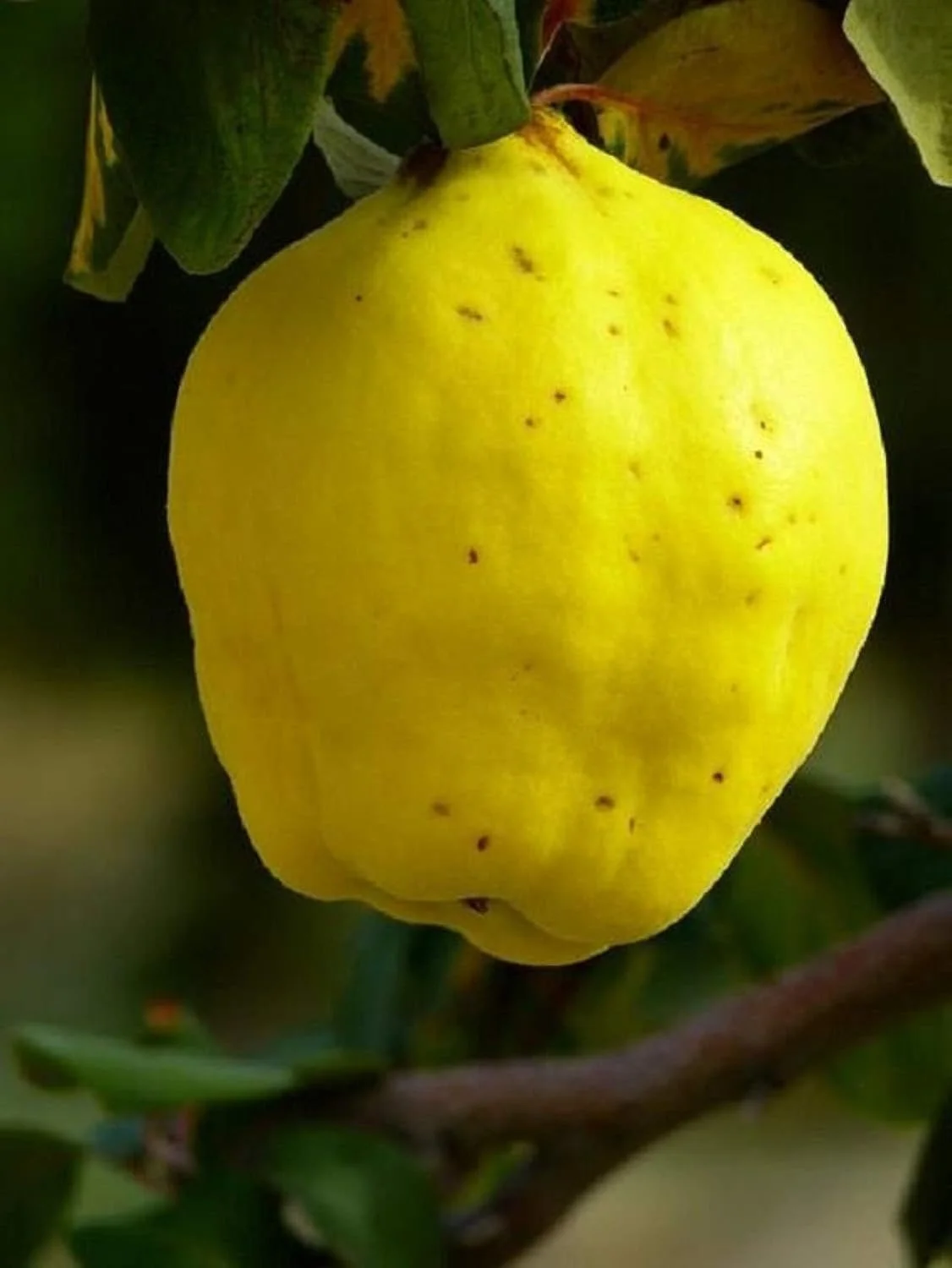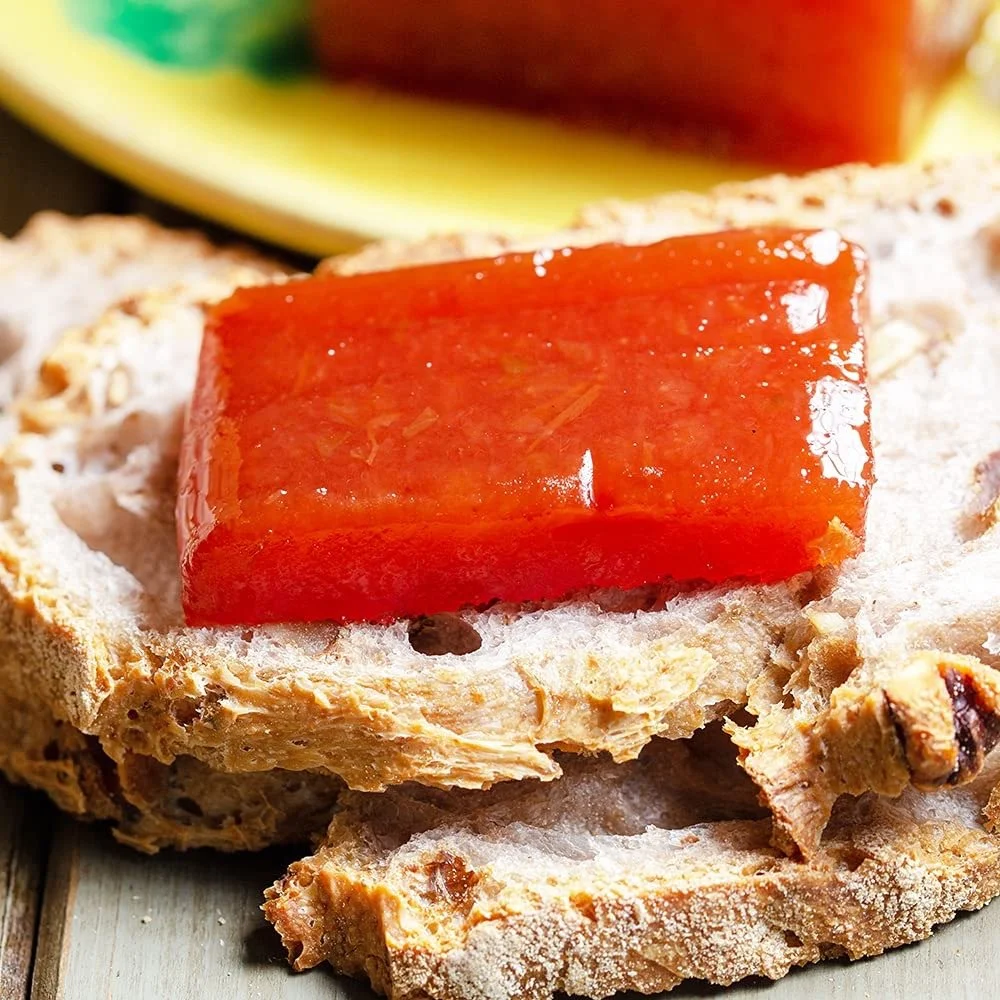Native to warm-temperate Caucasus region of southwest Asia, the quince is a small deciduous tree related to apples and pears that produces a bright golden yellow pome fruit. Unlike apples and pears, however, this fruit has a hard texture and the flesh is tough and spongy; its raw taste is tannic and sour.
Ripening in late autumn, the green fruit changes to an almost fluorescent-yellow hue on its strongly perfumed flesh.
Historical Uses
Quince figures prominently in the Sephardic cuisine of Middle Eastern Jews. Some biblical scholars believe quince is the fruit mentioned as "apples" in Genesis and Song of Solomon.
Today, quince is most commonly used to make preserves and jellies or a paste known as membrillo.
Preparation
Tart and grainy when raw, quince must be cooked to be truly edible. Recipes are somewhat difficult to locate.
Storage
End-of-season quince may be stored in the refrigerator for up to two months before the unblemished ripe fruit begin to turn brown and go from firm to mushy.
Early season quince cannot be stored as long.

